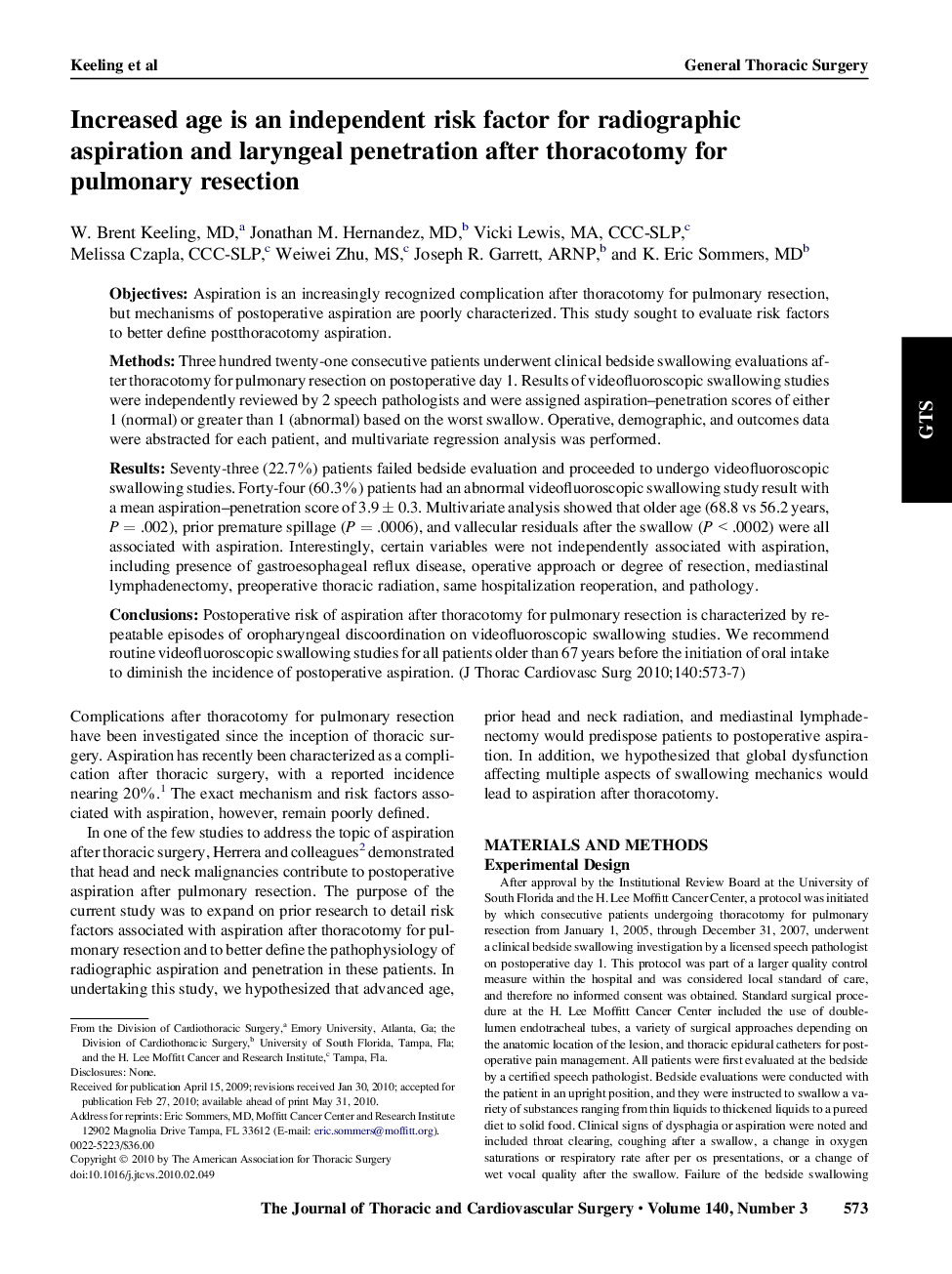| Article ID | Journal | Published Year | Pages | File Type |
|---|---|---|---|---|
| 2983358 | The Journal of Thoracic and Cardiovascular Surgery | 2010 | 5 Pages |
ObjectivesAspiration is an increasingly recognized complication after thoracotomy for pulmonary resection, but mechanisms of postoperative aspiration are poorly characterized. This study sought to evaluate risk factors to better define postthoracotomy aspiration.MethodsThree hundred twenty-one consecutive patients underwent clinical bedside swallowing evaluations after thoracotomy for pulmonary resection on postoperative day 1. Results of videofluoroscopic swallowing studies were independently reviewed by 2 speech pathologists and were assigned aspiration–penetration scores of either 1 (normal) or greater than 1 (abnormal) based on the worst swallow. Operative, demographic, and outcomes data were abstracted for each patient, and multivariate regression analysis was performed.ResultsSeventy-three (22.7%) patients failed bedside evaluation and proceeded to undergo videofluoroscopic swallowing studies. Forty-four (60.3%) patients had an abnormal videofluoroscopic swallowing study result with a mean aspiration–penetration score of 3.9 ± 0.3. Multivariate analysis showed that older age (68.8 vs 56.2 years, P = .002), prior premature spillage (P = .0006), and vallecular residuals after the swallow (P < .0002) were all associated with aspiration. Interestingly, certain variables were not independently associated with aspiration, including presence of gastroesophageal reflux disease, operative approach or degree of resection, mediastinal lymphadenectomy, preoperative thoracic radiation, same hospitalization reoperation, and pathology.ConclusionsPostoperative risk of aspiration after thoracotomy for pulmonary resection is characterized by repeatable episodes of oropharyngeal discoordination on videofluoroscopic swallowing studies. We recommend routine videofluoroscopic swallowing studies for all patients older than 67 years before the initiation of oral intake to diminish the incidence of postoperative aspiration.
